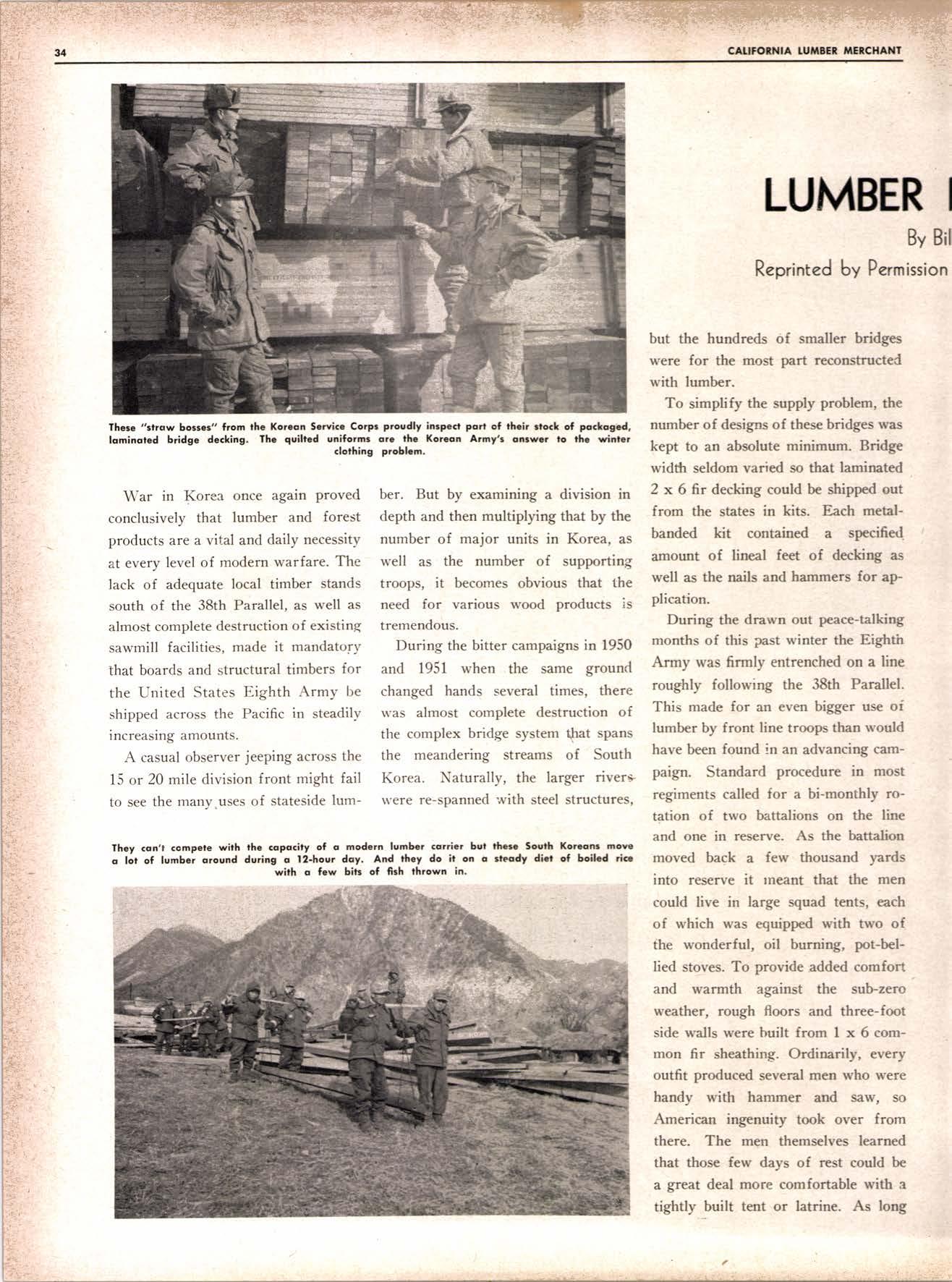
1 minute read
LUMBER
Reprinted by Permission but the hundreds of smaller bridges were for the most part reconstructed with lumber.
To simplify the supply problem, the kept to an abSolute minimum. Bridge clothing width serdom varied so that laminated War in Korea once again proved ber. But by examining a division in 2 x 6 fir decking could be shipped out conclusively that lumber and forest depth and then multiplying that by the from the states in kits' Each metalproducts are a vital and daily necessity number of major units in Korea, as banded kit contained a specified at every level of modern warfare. The well as the number of supporting lack of adequate local timber stands troops, it becomes obvious that the south of the 38th Parallel, as well as need for various wood products is almost complete destruction of existing tremendous. sawmill facilities, made it mandatory
During the bitter campaigns in 1950 that boards and structural timbers for and 1951 when the same ground the United States Eighth Army be changed hands several times, there shipped across the Pacific in steadily u'as almost cornplete destruction of increasing amounts. the complex bridge system tlrat spans A casual observer jeeping across the the meandering streams of South 15 or 20 mile division front might fail Korea. Naturallv, the larger river* to see the many.uses of stateside lum- lvere re-spanned 'with steel structures,
They con,t conpete with thc copocify of o modcrn lumbcr corricr buf thore Solh Xorum mon o lor of lumbcr oround during o l2Jrour doy. And rhcy do it on c rrody dier of boibd do amount of lineal feet of decking as well as the nails and hammers for ap plication.
During the drawn out p€ace-talking months of this past winter the Eighth Army was firmly entrenched on a line roughly following the 38th Parallel. This made for an even bigger use of lumber by front line troops than would have been found in an advancing campaign. Standard procedure in most regiments called for a bi-monthly rotation of two battalions on the line and one in reserve. As the battalion moved back a few thousand yards into reserve it rneant that the men could live in large squad tents, each of which was equipped with two of ihe wonderful, oil burning, pot-bellied stoves. To provide added comfort and warmth against the sub.zero weather, rough floors and three-foot side walls were built from I x 6 common fir sheathing. Ordinarily, every outfit produced several men lvho were handy with hammer and sw, so American ingenuity took over from there. The men themselves learned that those few days of rest could be a great deal more comfortable with a tightly built tent or latrine. As long










